Reid's Special Sunday: Shadow Play
Reid, our January-Term intern, designed and hosted a really fun special Studio activity last week for Museum guests. Here is her report on the planning process of the project and her reflection on the day.
When brainstorming for my Special Sunday activity, I knew right off that I wanted to experiment with the way we use light to make images. In the studio, our large windows provide so much beautiful natural light, and I wanted to utilize this feature in the activity. Meghan and I were bouncing activity ideas off each other when we came up with the idea of tracing shadows. Upon further elaboration we came up with the idea of using found objects to make shadow collages, tracing the lines, and finally painting over the drawn images. Initially I was having trouble deciding between collaging and painting, and this project combined the two!
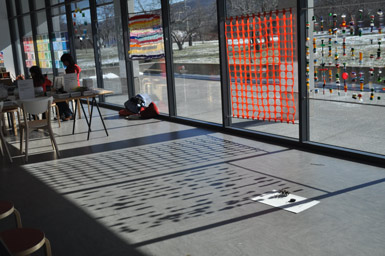
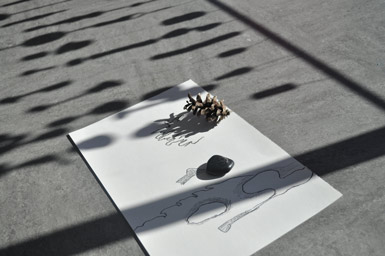
Once I knew what I wanted to do, I began to plan out what materials we would use. I played with different kinds of drawing tools, paints, and paper to find the perfect combination of supplies. In the end, I decided to use Staonal crayons with tempera cake paints on large pieces of watercolor paper. I found the paint appeared bold and bright on the paper and didn’t smudge the Staonal, so the tracings remained intact.
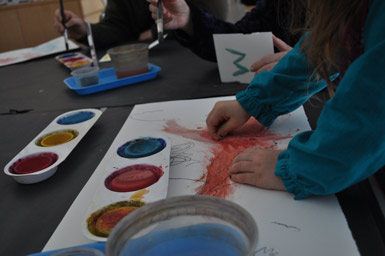
We put out baskets of found and natural objects that would cast interesting shadows. Each visitor could choose up to 4 objects at a time, and when they were done with those they could trade them back in for different pieces to trace. We had natural objects like stones, pinecones, and seashells, along with found objects like ribbon, bottle caps, and mesh. It was important to have a variety of different shapes and sizes available.
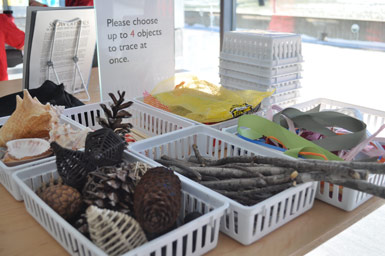
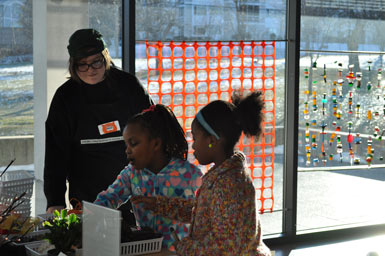
On the day of the project we were lucky enough to have gorgeous sunny weather. Of course, because of New England’s unpredictable weather, we were prepared to use an overhead projector as a back-up plan in case the sun wasn’t out. We arranged the back of the art studio so that the tables were pushed to the right side; this area was set up as the painting area, complete with paintbrushes, water, sponges, and of course paint!
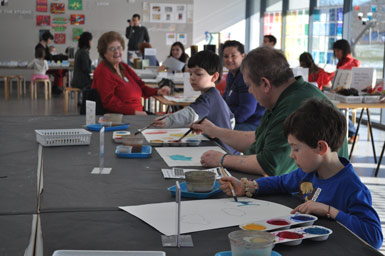

The left side of the studio was the tracing area. This is where visitors would put down their paper on the floor or sit on a chair and trace on a stool to arrange their objects and trace the shadows. We had cool shades that had previously been crafted by staff members on the windows already, and we moved these so there could be some interesting shadow patterns on the floors for the visitors.
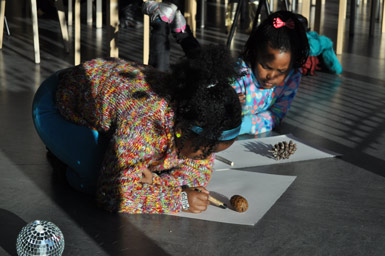
The cool thing about this project was it could be as complicated or as simple as you want it to be, depending on age level, ability, and interest. I didn’t want something where the guidelines were super stringent. If a child didn’t want to draw on the floor, they could just paint at the table. I made sure to emphasize that when talking to the visitors. There were no rules to this project; the point of it was to allow the materials and the environment to inspire and to create.
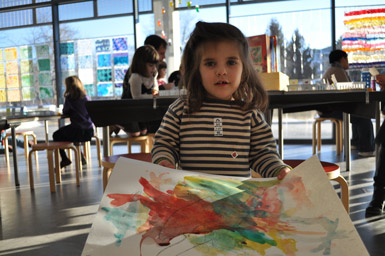
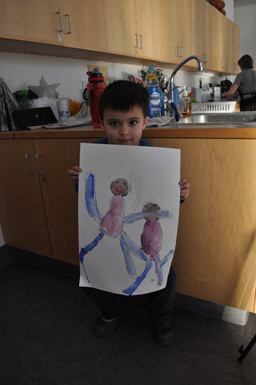
I would say this project was definitely a success. It was exciting to see the families collaborating with each other and having fun with each other’s work. This activity was able to engage visitors of all ages. I was delighted to see how creative the children (and adults!) were with this project. Some visitors were very abstract with the images they made, while others used the shadows to create scenes out of their objects. All in all, it was a very fun afternoon in the art studio!
